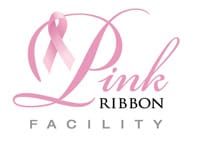Mammography
Brattleboro Memorial Hospital offers state-of-the-art, full field digital mammography in our dedicated Breast Care Center within the Richards Building to ensure the utmost privacy for our patients.
The Center includes:
- Mammography
- Ultrasound
- Stereotactic and Vacuum Assist Biopsy.
3D Mammography

The Nurse Navigator, also located in the Richards Building, works in close conjunction to ensure accessibility and access to key programs for patients.
 Mammography is considered the most effective tool for early breast tumor detection; it uses low dose x-rays to evaluate breast tissue for abnormalities. Most medical experts agree that successful treatment of breast cancer often is linked to early diagnosis. Mammography plays a central part in early detection of breast cancers because it can show changes in the breast up to two years before a patient or physician can feel them.
Mammography is considered the most effective tool for early breast tumor detection; it uses low dose x-rays to evaluate breast tissue for abnormalities. Most medical experts agree that successful treatment of breast cancer often is linked to early diagnosis. Mammography plays a central part in early detection of breast cancers because it can show changes in the breast up to two years before a patient or physician can feel them.
Current guidelines from the American Cancer Society, the American Medical Association and the American College of Radiology recommend screening mammography every year for women, beginning at age 40.
Digital full field mammography offers a number of practical advantages and patient conveniences:
- Digital images are easily stored and transferred electronically, eliminating the dependency on one set of film images.
- This advanced technique allows the radiologist to alter the orientation, magnification, brightness and contrast to produce optimal images of the breast that can be seen on a computer screen.
- It is used in conjunction with Computer-Aided Detection software, or CAD, which uses a digitized mammographic tool to search for abnormal areas of density, mass, or calcification. The CAD system highlights these areas on the images, alerting the need for further analysis.
The advantages of digital mammography and computer-aided detection are:
- Superior contrast resolution of digital mammography
- The ability to manipulate images make for more accurate detection of breast cancers,
- Second Look Technology: the computer-aided detection, or CAD, obtains a second, computerized reading in the hope of finding more cancers or more accurately gauging signs of malignancy.
Before scheduling a mammogram, you should discuss problems in your breasts with your doctor.
Here at Brattleboro Memorial Hospital scheduling is easy with just a call to 802-251-8451 with many appointment times and days available to make your appointment a quick and easy part of your day.
On the day of your exam:
- Do not use deodorant or body power. Tiny flecks of these substances may appear on the mammography images and interfere with the interpretation
- If you have breast implants, be sure to notify the Mammography Department prior to your appointment. We allow a longer appointment time for imaging breast implants
To image your breast, the mammography technologist will place you near the machine and your breast will be positioned on a platform and compressed with a paddle. With the application of compression on your breast you will feel pressure on the breast as it is squeezed by the compressor. Some women with sensitive breasts may experience some minor discomfort.
Breast compression is necessary in order to:
- Even out the breast thickness-so that the tissue can be visualized
- Spread out the tissue-so that small abnormalities won’t be obscured
- Allow use of a lower x-ray dose
- Hold the breast still-to eliminate blurring of the image caused by motion
- Reduce x-ray scatter-to increase image sharpness
SCREENING VS. DIAGNOSTIC:
Routine screening views of the breasts are a top to bottom and side view.
In addition to the four views obtained in a screening mammogram, there are many specialized views that are possible to further investigate a finding, which may also be further evaluated with the use of ultrasound.
A diagnostic mammogram is a specialized mammogram designed to solve a particular problem.
Reasons to have a diagnostic mammogram:
- Questions arising from a screening mammogram.
- Breast symptoms such as a lump, focal breast pain or nipple discharge.
- Follow-up exams.
- Personal history of breast cancer.
Importance of compression:
- Reduces radiation dosage
- Provides several technical improvements in image quality
- Immobilization of the breast reduces blurring caused by motion
- Localization of structures in the breast are brought closer to the image receptor, which reduces geometric blurring
- The breast tissue is more uniform, which results in more even penetration and less difference in radiographic density
- Reduction of the breast thickness, which reduces the ratio of scatter to primary radiation, thereby better subject contrast
- The spreading of breast tissue enables suspicious areas to be more easily identified.
Post-Mammography Instructions:
We regret any discomfort you may have experienced from compression during your mammogram. Do not be alarmed if, as a result of compression, there is some temporary skin discoloration involving one or both breasts. Occasionally there will be a mild aching as a result of compression. If the aching persists, you may contact your physician.
Compression allows clearer pictures of you breasts. It is important for you to understand that:
- Compression is not dangerous – it does not damage breast tissue
- It produces no long-term discomfort
- With compression we obtain the best possible view of your breast with the least amount of radiation.
